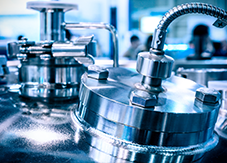Solution Results in Breakthrough for TVA

TEAM’s experienced technicians continuously provide customers with leak sealing and machining services that they often begin to think of them as “routine procedures.” But for many customers, these “routine procedures” result in a tremendous cost savings – amounting to thousands of dollars a day – and significantly maximizing the plant’s asset uptime. For more than twenty years, TEAM has provided many of these services to the Tennessee Valley Authority (TVA). A solution it recently created for TVA’s Sequoyah Nuclear Plant in Soddy Daisy, Tennessee, ranked among one of the most efficient.
TEAM was called upon to develop and implement a solution for servicing two of TVA Sequoyah’s most challenging pump bases. TVA’s 2C CBP and 2B #7 HDTP pump machines had a long history of problems and had progressively worsened over the years. TVA had previously attempted a number of solutions with little success. TVA’s two pump machines were experiencing tremendously high vibration levels. Its motors consistently ran in TVA’s PDM Alert range for vibration (above 0.325 ipsp). In one month, the vibration in the OB horizontal for the motor was recorded at 0.550 ipsp and the IB horizontal was 0.523 ipsp.
This vibration is often caused by how the pumps are mounted on the bases. The pumps are mounted on the steel bases with grout. Over the years, the grout wears down and a void is created between the bases and grout. If the “drive shaft” between the motor and pump is not perfectly aligned, the bearings wear causing tremendous vibration. As a result the entire system does not run properly, and can be extraordinarily costly to repair.
TEAM’s solution for TVA entailed assessing the vibration and alignment level of the pumps and bases and providing pressure grouting and pumping and machining services for the two pump bases. The pump bases were 16 feet 8 inches by 6 feet by 2 inches wide. Initially, on-site TEAM technicians laser scanned the bases to determine their combined tolerance level – off by 100 ths. Prior to pumping the bases, TEAM conducted acoustic testing to determine if there was a void. Then TEAM technicians drilled holes and pumped the epoxy resin into the hole. The first base required two and a half units of epoxy resin. The second base took three units. The following day acoustic testing determined the levels were within tolerance.
After the bases were pumped, TEAM determined that the machine level – where the motors and pumps meet – was out of alignment by 100 thousandth. They were then machined to create perfect alignment between the motor and the pump, which brought the bases back within tolerance level of 1 ths.